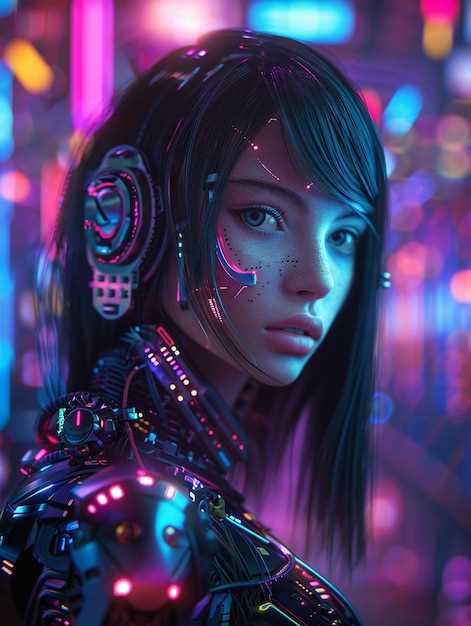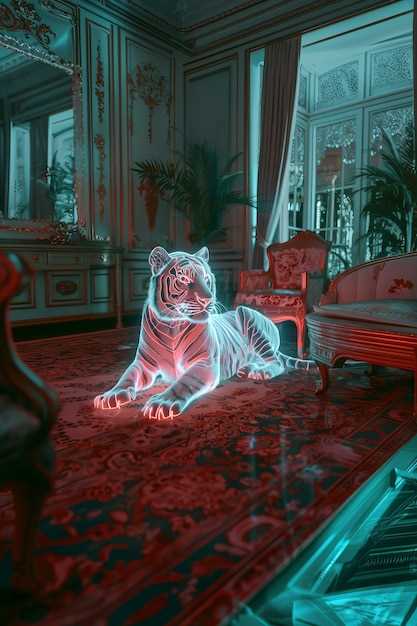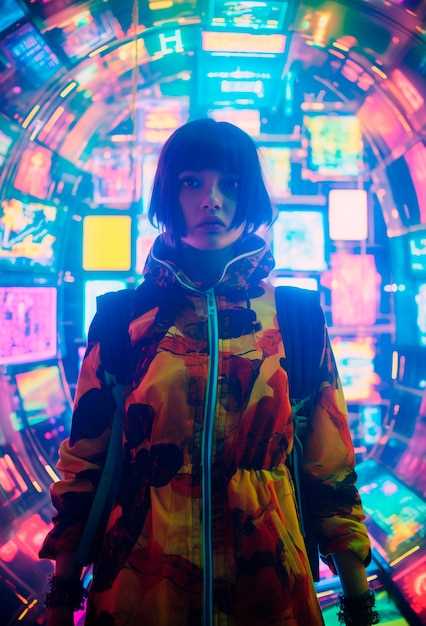In this era of innovation and technological advancements, there is a groundbreaking shift happening in the realm of artistic creation.Artists, creators, and collectors are embracing a new form of ownership and authenticity through Non-Fungible Tokens (NFTs).
This disruptive technology is reshaping the way we perceive and interact with digital art, offering unique opportunities for artists to showcase their work, connect with a global audience, and create value in a decentralized digital ecosystem.
Redefining the Landscape of Digital Creativity
In this section, we explore the transformative impact of Non-Fungible Tokens (NFTs) on the realm of digital expression. These unique digital assets are reshaping the way artists create, sell, and interact with their work in the online space, opening up new possibilities for innovation and collaboration.
| 1. Empowering Artists | NFTs provide artists with a direct channel to showcase and monetize their creations, bypassing traditional gatekeepers and intermediaries. |
| 2. Authenticity and Ownership | Through blockchain technology, NFTs offer verifiable proof of ownership and provenance, ensuring the integrity and value of digital artworks. |
| 3. Democratizing the Art Market | NFTs enable artists from diverse backgrounds to gain recognition and profit from their art, fostering a more inclusive and accessible creative landscape. |
The Role of Blockchain in Art
Blockchain technology plays a crucial role in the art world by providing secure and transparent solutions for the creation, distribution, and ownership of digital artworks. This decentralized ledger system ensures that each piece of art is unique, authentic, and easily verifiable. By utilizing blockchain, artists can protect their intellectual property rights and establish a direct relationship with collectors, eliminating the need for intermediaries.
Decentralizationis a key feature of blockchain technology that removes the reliance on centralized authorities in the art market. This shift towards peer-to-peer interactions allows artists to maintain full control over their creations and engage directly with buyers. Additionally, the use ofsmart contractsenables automatic royalty payments to artists whenever their work is resold, ensuring a fair and transparent revenue stream.
Through the implementation of blockchain, the art industry is experiencing aparadigm shifttowards a more inclusive and accessible ecosystem. Artists from diverse backgrounds are able to showcase their work on a global scale, while collectors can confidently invest in digital art knowing its provenance and authenticity. As blockchain continues todisrupttraditional models of art ownership and distribution, the future of the art market looks increasingly decentralized and innovative.
Immutable Ownership Records

In the realm of digital art, unchanging property documents play a pivotal role in transforming the landscape of ownership. These records, which cannot be altered or modified, provide a secure and transparent way to establish and verify the true ownership of a particular digital asset.
By leveraging blockchain technology, artists and collectors alike can rely on these immutable ownership records to safeguard their creations and investments, ensuring that their value and authenticity remain intact over time. This revolutionary shift towards more accountable and verifiable ownership has the potential to redefine the way we perceive and interact with digital art in the modern age.
Decentralized Marketplaces

Exploring the power of decentralized platforms in the realm of non-fungible tokens and digital art, decentralized marketplaces play a crucial role in enabling artists and collectors to engage in peer-to-peer transactions without the need for intermediaries.
| Benefits of Decentralized Marketplaces | Challenges to Overcome |
|---|---|
| Increased transparency | Ensuring security and authenticity |
| Lower fees and no middlemen | Regulatory concerns |
| Accessibility to global audience | Scalability issues |
As decentralized marketplaces continue to evolve, they present new opportunities for artists to reach a broader audience, while also posing challenges such as regulatory compliance and scalability. Finding a balance between innovation and regulation will be crucial in shaping the future of NFTs and digital art.
Economic Impacts on Artists
Within the realm of creative professionals, the financial implications of embracing non-fungible tokens (NFTs) present a significant shift in the traditional art market. By leveraging blockchain technology, artists have the opportunity to explore new revenue streams and engage with a global audience in ways previously unattainable.
These economic shifts are reshaping the dynamics of how artists monetize their work, breaking down barriers to entry and providing avenues for direct interaction with collectors. As digital art gains recognition and legitimacy through the NFT market, artists are empowered to take control of their financial destinies and establish their value independent of traditional gatekeepers.
New Revenue Streams

Exploring alternative avenues for generating income in the realm of digital art is becoming increasingly popular as innovative technology continues to reshape the landscape. Artists now have the opportunity to tap into diverse sources of revenue beyond traditional methods, opening up new possibilities for financial success and creative freedom.
- Monetization through fractional ownership
- Selling digital merchandise and collectibles
- Licensing intellectual property for commercial use
- Creating exclusive memberships or subscriptions
- Participating in virtual exhibitions or online auctions
Eliminating Middlemen
In the realm of digital creation and ownership, there is a growing movement towards cutting out intermediaries in the buying and selling process. This shift towards direct peer-to-peer transactions is reshaping the landscape of the art market, enabling artists to connect directly with buyers without the need for traditional middlemen.
| Advantages | Challenges |
| Increased transparency | Establishing trust without intermediaries |
| Lower fees | Ensuring security in transactions |
| Empowerment of artists | Navigating a decentralized marketplace |
This decentralized approach allows artists to retain more control over their work and its value, while also providing collectors with a more direct and personal connection to the art they are purchasing.
Community and Culture Shifts
In the realm of digital art, there is a noticeable shift taking place within communities and cultures. This shift is not just a passing trend, but rather a significant change that is reshaping the way artists create and consume art.
| One | As artists explore the world of NFTs and experiment with new ways of showcasing their work, they are fostering a sense of community among themselves. This community is built on a shared passion for innovation and creativity, and it is shaping the future of digital art. |
| Two | Furthermore, this cultural shift is not limited to artists alone. Collectors, investors, and enthusiasts are also part of this evolving landscape. They play a vital role in supporting artists and driving the industry forward by embracing the unique opportunities presented by NFTs. |
| Three | Through collaborations, exhibitions, and discussions, these communities are creating a vibrant ecosystem that thrives on diversity and inclusivity. This shift towards a more interconnected and supportive culture is breaking barriers and opening up new possibilities for digital art. |
Empowering Emerging Artists
In this section, we will explore the ways in which NFTs can provide opportunities for up-and-coming creators to establish themselves in the digital art world. By leveraging blockchain technology, these innovative tools offer a platform for budding artists to showcase their work, connect with a global audience, and gain recognition for their talent.
Empoweringaspiring artists involves more than just giving them a platform; it also entails providing them with the tools and resources they need to thrive in a competitive market. NFTs offer a unique opportunity for emerging creatives to monetize their art, build a loyal following, and establish a sustainable career in the ever-evolving digital landscape.
Through theempowermentof emerging artists, NFTs are reshaping the traditional art market by democratizing access, fostering creativity, and breaking down barriers to entry. By embracing this technology, artists have the potential to gain autonomy, control, and recognition in a rapidly changing industry.
Video:
NFT Explained: The Good and the Bad
NFT Explained: The Good and the Bad by FutureNow 38,354 views 3 years ago 13 minutes, 42 seconds
FAQ:
What are NFTs and how are they revolutionizing the future of digital art?
NFTs, or non-fungible tokens, are unique digital assets that represent ownership of a particular piece of art or digital content. They are revolutionizing the future of digital art by providing creators with a new way to monetize their work, connect with collectors, and get credit for their creations in a decentralized manner.
What are some key trends in the NFT market for digital art?
Some key trends in the NFT market for digital art include the rise of virtual galleries and art exhibitions, the use of blockchain technology to verify the authenticity and ownership of digital art, and the collaboration between traditional art institutions and NFT platforms to promote and sell digital art.
How are NFTs changing the way artists create and sell their digital artwork?
NFTs are changing the way artists create and sell their digital artwork by allowing them to directly connect with collectors and fans, receive royalties from secondary sales of their work, and experiment with new forms of digital art that can only exist in the blockchain space.
What are some challenges that artists and collectors face in the NFT market for digital art?
Some challenges that artists and collectors face in the NFT market for digital art include the environmental impact of blockchain technology, the lack of regulation and protection for buyers, and the high fees associated with creating and trading NFTs on certain platforms.
What are some insights into the future of NFTs in the digital art world?
Some insights into the future of NFTs in the digital art world include the potential for new business models to emerge, the role of NFTs in supporting diverse and underrepresented artists, and the need for greater education and awareness about blockchain technology and digital ownership rights.